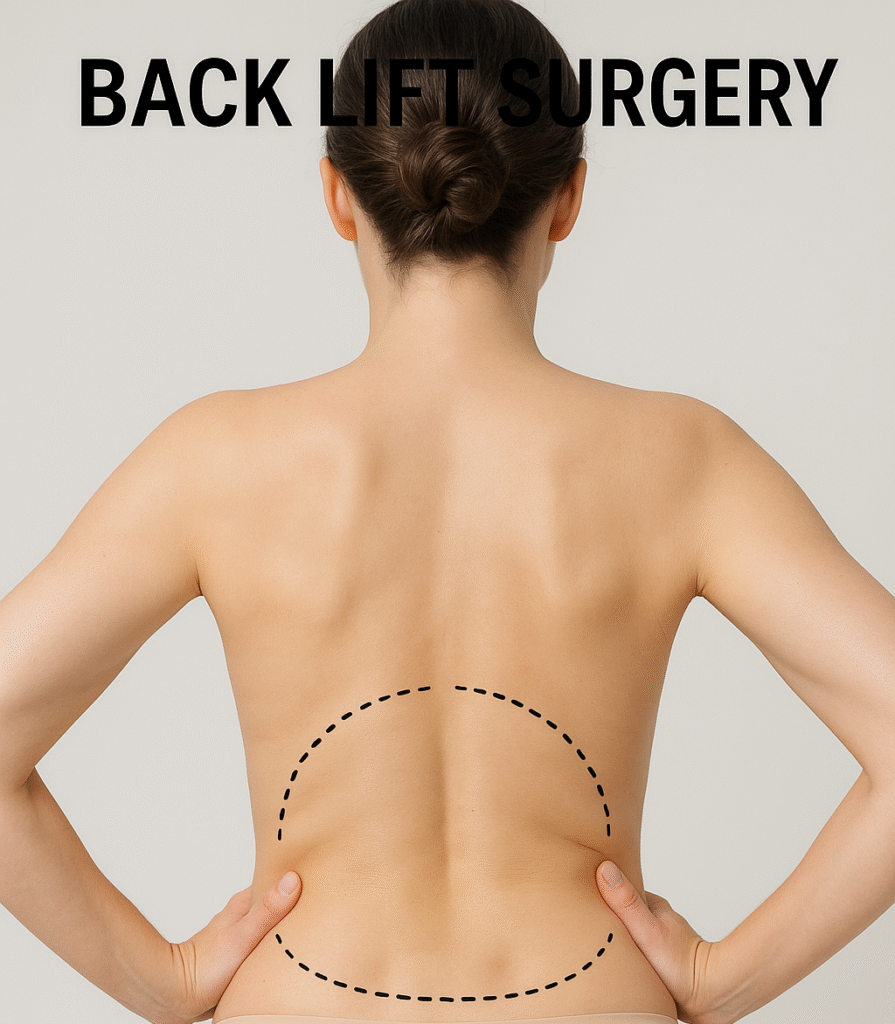Back Lift Surgery
Back Lift Surgery: Procedure, Benefits, and Recovery Explained
Introduction
Back lift surgery, also known as a torsoplasty or upper/lower back lift, is a cosmetic surgical procedure designed to remove excess skin and fat from the back area. It is commonly performed after significant weight loss or aging, where the skin loses elasticity and begins to sag. This procedure helps achieve a smoother, more contoured, and youthful back appearance, improving both aesthetics and comfort.
Understanding Back Lift Surgery
Back lift surgery targets loose skin and fatty deposits on the upper back, mid-back, or lower back regions. Depending on the patient’s anatomy and goals, the surgeon may perform an upper back lift (bra line lift) or lower back lift (often combined with a buttock lift). The surgery involves removing excess tissue and tightening the remaining skin to create a firmer, toned silhouette.
This procedure is often sought by individuals who have undergone massive weight loss, such as after bariatric surgery, or those experiencing age-related sagging that exercise alone cannot correct.
The Surgical Procedure
Consultation and Planning:
The surgeon evaluates the patient’s medical history, skin quality, and aesthetic goals. A customized surgical plan is developed, focusing on the specific back area requiring contouring.Anesthesia:
The procedure is typically performed under general anesthesia to ensure patient comfort.Incision and Tissue Removal:
The surgeon makes an incision—usually hidden along the bra line or lower back crease—to remove excess skin and fat. In some cases, liposuction may be used for additional fat contouring.Skin Tightening and Closure:
The remaining skin is pulled taut, sutured in place, and dressed with compression garments to support healing.
The surgery generally takes 2–4 hours, depending on the extent of correction needed.
Recovery and Aftercare
Recovery time after a back lift can vary from 2 to 4 weeks. Patients are advised to:
Avoid strenuous activities for several weeks
Wear compression garments to reduce swelling and promote contouring
Follow prescribed medications for pain and infection prevention
Attend all follow-up appointments for proper healing assessment
Swelling and bruising are normal in the early stages. Most patients can resume normal daily activities within a few weeks, with final results visible after full healing.
Benefits of Back Lift Surgery
Improved Body Contour: Removes loose, hanging skin for a smoother back profile.
Enhanced Confidence: Many patients experience greater self-esteem and comfort in clothing.
Long-Lasting Results: When combined with a stable weight and healthy lifestyle, results are durable.
Better Posture and Mobility: Removing heavy excess skin can reduce discomfort and improve movement.
Risks and Considerations
Like all surgeries, a back lift carries potential risks, including:
Scarring (though usually well-hidden under clothing)
Infection or bleeding
Temporary numbness or tightness
Asymmetry in rare cases
Choosing a board-certified plastic surgeon and following all pre- and post-operative instructions significantly reduce these risks.
Ideal Candidates
Ideal candidates for back lift surgery include individuals who:
Have loose or sagging skin on the upper or lower back
Maintain a stable weight
Are in good general health
Have realistic expectations about surgical outcomes
Conclusion
Back lift surgery offers transformative results for individuals struggling with sagging skin and poor body contour after major weight loss or aging. By removing excess tissue and tightening the back area, this procedure enhances physical appearance, comfort, and confidence. As with any cosmetic surgery, success depends on selecting a qualified surgeon and maintaining healthy lifestyle habits after recovery.

